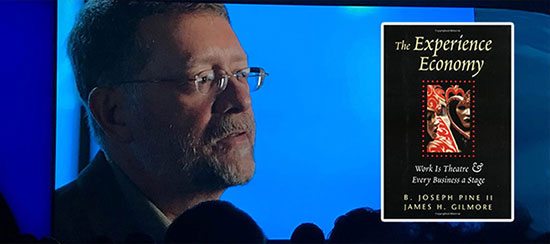Nottingham Spirk
The annual Consumer Electronics Show is so vast that everyone who attends can come away with different impressions about what emerging technologies will most shape markets, and the world, in the coming year. In January 2016, we were most impressed with the stunning advances in video screens. At the CES 2017 show, recently held in Las Vegas, everywhere we looked we noticed promising new products related to movement, making it easier and safer to indulge that primal urge to explore our environments. We call this theme “Connected Mobility.” In this context, connected refers to relationships between people and devices, between devices and other devices, and of course between humans who live, commute and work together.
All three types of connectivity are at work in Carnival Cruises’ OCEAN system, a vast but mostly invisible network of hardware and software designed to make cruise tourists’ experience virtually seamless.
The device is powered by proprietary technology developed by Carnival that features an IoT network of intelligent sensors and experiential computing devices. … The wearables will streamline and expedite the port embarkation and disembarkation process; allow guests to access their staterooms as they approach the door (no keycard required); locate friends and family around the cruise ship; enable guests to purchase merchandise without any transaction, cards, or paper; deliver enhanced dining experiences, based on food and beverage preferences; and power an array of interactive gaming and immersive entertainment experiences
Sharing the keynote stage with the CEO of Carnival Cruise was Joe Pine, co-author of the book The Experience Economy.
Pine helped the Carnival Cruise team relate this exiting technology to the desire of consumers for an optimal experience. Pine preaches that technology must always delight consumers, not complicate their lives. Watch a video of the OCEAN system.
Travel often means hauling luggage, but that’s getting easier. Bluesmart’s luggage pairs with an app that allows the user to lock, locate and weigh the bag, which can also charge devices. COWAROBOT is a powered suitcase that follows its owner like a pet.
Everywhere we went, we saw people test-driving powered personal transport devices. Most looked like products we’ve seen before, but offered advancements in battery life, speed, maneuverability and convenience. Our favorites were JYRO Wheel’s Himiway, a briefcase-sized electric unicycle; the XTND electric skateboard; the Immotor Go collapsible electric scooter; and Swagtron’s SwagCycle bike, SwagRoller electric unicycle and SwagSurf, an electric surfboard that reaches speeds of nearly 15 m.p.h.

Bicycles are a classic mode of transportation, but several companies offered solutions that upgrade your bike to be connected. A company called Beeline from the UK developed a simple connected dial that mounts on your bicycle handlebars. It syncs to the Beeline Mobile App on your device and displays an easy-to-read compass. Set up your directions in the App and the dial points you in the right direction along your path. SPEEDNITE offers a smart headlight which features “tiltable movement” with maximum 90° angle. It’s controlled by a Head Motion Sensor for real-time tracking you’re the movement of your head to be in sync with where you are looking. On top of the headlight is a full color display for cycling speed, cadence and heart rate. And for Motorcycles, REYEDR offers a universal helmet mount that transforms any full-face motorcycle helmet into a smart AR device. This would project relevant information in front of the helmet so they can keep their eyes on the road without looking down.
Honda showed off a self-balancing motorcycle it’s been working on, repurposing some technology from the company’s Asimo robot. Honda also introduced Safe Swarm, software that could make widespread use of autonomous vehicles safer. Inspired by fish schools, it’s a great example of biomimicry in technology.
Safe Swarm essentially means that cues picked up by one vehicle equipped with connective communication tech can pass along information to others in proximity, far before a driver would be aware of anything. Cars can shuttle their collected knowledge down the line, propagating info about a pile-up potentially miles ahead in near real-time to help make it easier for human drivers to take action to avoid problems before they happen.
Not all connected mobility involves reaching a destination. Peloton introduced a stationary fitness bike with a screen and social media network for joining live, remote spin classes in a “totally immersive and socially connected workout experience.” And speaking of fitness, Under Armour presented more on its plans to bring tech, apps and apparel together in products like running shoes with sensors that “measure a runner's muscular fatigue level and readiness to work out.” Under Armour is even extending the notion of mobility to sleeping, with Athlete Recovery Sleepwear: “The bio-ceramic material absorbs the heat emitted by the body and reflects it as far infrared (FIR) back to the skin, which Under Armour claims, ‘helps your body recover faster, promotes better sleep, reduces inflammation, and regulates cell metabolism.’”
These are just some of the ways that products are enhancing connected mobility. We’ll explore more in the future.
About Nottingham Spirk:
Nottingham Spirk is a business innovation and product design firm with an unrivaled record of delivering disruptive consumer goods, medical devices, and packaging design solutions to market. We collaborate with Fortune 1,000 companies, funded start-ups and non-profit organizations to discover, design and execute product programs and strategic business platforms that will wow customers, grow markets and generate new revenue streams. Learn more about us.


Submit a comment